How to Make the Best Steak Sandwich, According to Chefs
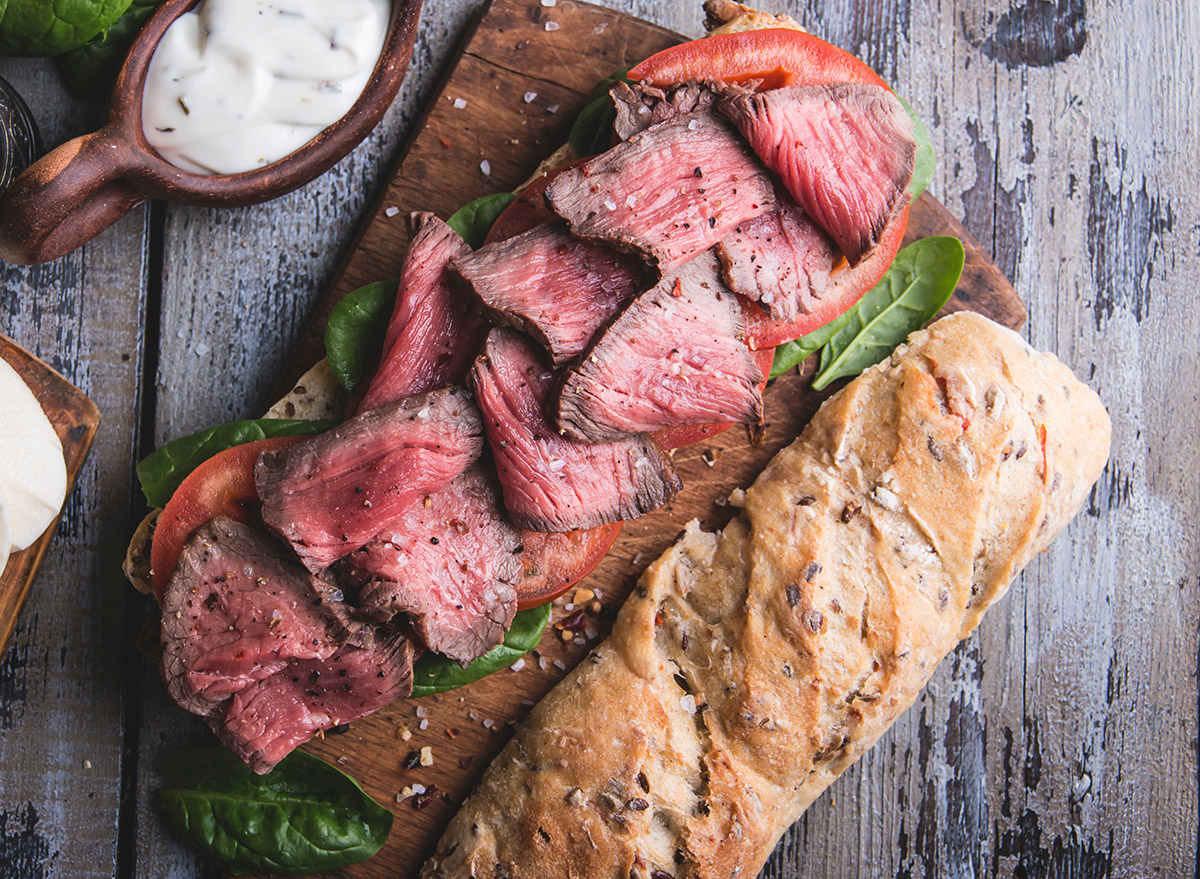
When it comes to quintessential comfort food, steakhouses are as seared in Americana as apple pie, hot dogs, and barbecue. Iconic dining destinations, steakhouses aren’t just for prime rib and ribeye, but for everything from chicken dishes and martinis to burgers and surf and turf. And while most steakhouses are stereotypically ritzy, they’re also known for their burly sandwiches.
Steak sandwiches aren’t just for steakhouses, but also for houses that have steak (a key distinction). We’ve already covered the best cuts of steak to cook at home, the best ways to grill your steak, and even mail-order steaks worth ordering. When it comes to crafting the superlative steak sandwich at home, there are factors to consider, like which cuts are ideal, which bread to use, and how to compile it all.
Even when dining at home, it helps to get sandwich recommendations from restaurant pros. So we asked steakhouse chefs to share their tips on how to make the best steak sandwich, with insights into everything from cooking time to slicing technique.
What cut of steak to use
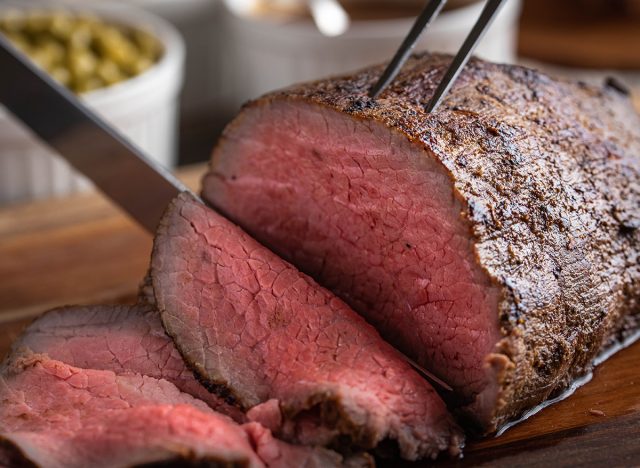
When it comes to using the perfect cut of steak, it’s all about striking that balance of texture and marbling and lean to fat. “The best cut is usually something that has a nice ratio of fat to lean,” explains Jeremiah Stone, chef/partner of the Tusk Bar in New York City. “Marble is always your friend, as well as staying away from too much sinew.”
For Hunters Evans, chef of Elvie’s in Jackson, Miss., eye of round fits that bill. “I love using the eye of round and treating it like prime rib,” he says, citing its leanness and affordability as perks.
Ian Boden, chef at the Shack in Virginia and Tabard Inn in Washington, D.C., agrees: “There are so many variables when it comes to a great steak sandwich, but if we want to make something more traditional, eye of round that’s shaved thin is the least expensive option. It’s a leaner cut, but the eye comes from the leg, which means it has loads of flavor due to the activity in the muscle.”
Skirt steak and flank steak are other popular picks, largely for the ease with which to slice them for sandwiches. “I tend to use skirt or flank steak I get at the Mexican market,” says Sophina Uong, chef/owner of Mister Mao in New Orleans, noting to cut the steak across the grain when preparing to serve. “These steaks are tender and lean, but very flavorful,” she says.
They are also the preferred cuts for Wyatt Evans, culinary director of P.S. Steak and Jester Concepts in Minneapolis. “Personally, my favorite cut of meat for a steak sandwich is flank or skirt steak,” he echoes. “I am looking for something flavorful and affordable with good marbling but not a lot of external fat. Flank and skirt take really well to a strong marinade that helps to flavor the meat, but also keeps it moist on the grill while getting a strong char on the outside.”
James Gee echoes those sentiments. According to the chef of Dovetail Bar & Restaurant in Washington, D.C., “skirt has an excellent texture when sliced thin against the grain—that makes for a very beefy yet tender sandwich.”
If you want to enrich your sandwich a bit more, Stephanie Izard likes to use ribeye. Chef/owner of Little Goat Diner in Chicago, where she serves her take on a ribeye sammie, Izard likes the cut for its “succulent, fatty” texture that holds up to toppings, cheese, and condiments.
At the end of the day, though, it all comes down to personal preference. As Kristin Beringson, chef of Nashville’s Henley, explains: “It’s less about the cut of meat you use and more about how you cut the meat you use! You want to be sure to cut small pieces against the grain so that the meat is easy to bite into. I like doing smaller pieces of steak that I slice after I grill them.”
How to prepare it
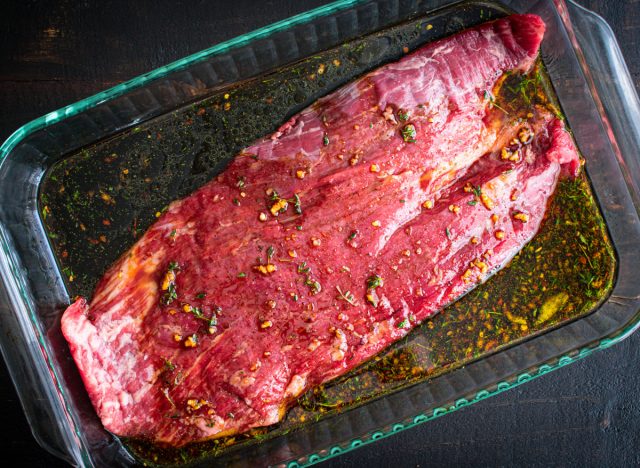
In the spirit of how to cut and cook your meat of choice, the next pivotal step is preparation, which can vary wildly based on personal preference and desired sandwich. For some chefs, like Izard, it starts well before the grill with a marinade. “A good marinade is key to flavoring the steak,” she says, opting for her own proprietary marinade called This Little Goat Went to Hong Kong “because it has a lot of rich, deep flavors, and when you’re cooking the steak, it gets a really nice caramelization.”
Gee follows a similar strategy. “For the skirt steak, an overnight marinade with a little minced garlic, black pepper, and thyme, splash of olive oil and a little red wine vinegar” is his MO, while Beringson suggests you “marinate your meat overnight or at least for 30 minutes before grilling or pan roasting.”
Likewise, other chefs like to season or rub their steak before heating things up. “The best way to prepare it is to rub it in a lot of seasoning, then roast it very hot in the oven for a short period of time so that the middle is medium rare,” Evans says. “From there, you’ll chill it and slice it as thin as possible.”
Uong likes to rub her steak with olive oil, season it with “lots of kosher salt and cracked black pepper,” and then get a griddle to medium-high heat and let the steak grill and caramelize.
After marinating “for at least four hours,” Evans suggests cooking the meat on a hot grill and flipping it occasionally until the internal temp reaches 110 degrees Fahrenheit. “Allow to rest for 10 minutes, then return to the grill until an internal temperature of 130-135 degrees [Fahrenheit] is reached,” he says.
“When seasoned with coarse, quality salt and grilled medium-rare, steak simply melts in your mouth,” explains Iliana de la Vega, chef of El Naranjo in Austin, Texas. “Be sure to cool the meat for seven minutes; then thinly slice against the grain before enjoying.”
What bread to use
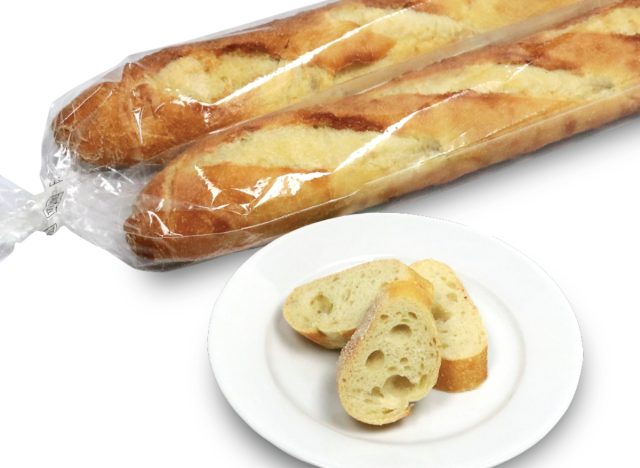
Now that your steak is selected, seared, cooled, and sliced, it’s time to assemble, and all sandwich assemblage begins and ends with bread.
“As far as bread goes, it needs to be toasty and thicker to hold up to the meat,” Beringson explains. “I like a baguette situation or a crusty piece of sourdough, and remember that thinner bread will fall apart on you.” Other sturdy options include toasted ciabatta, which is the roll of choice for Uong and Stone, while Gee opts for baguette, as well.
According to Gee, “You need a super crackly but delicate baguette, with enough chew to hold the sandwich together, but not so dense that you pull your teeth out when you try to bite into it.”
What condiments to use
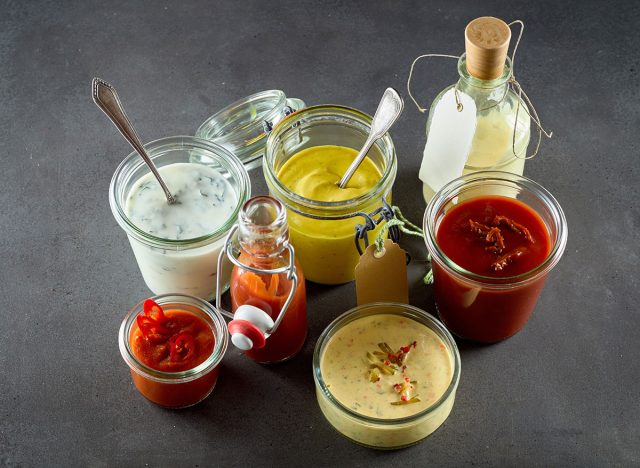
Last but not least, the finishing touch to a winning steak sandwich is the condiment selection, which can be as simple or as decadent as you desire.
“I love to use mayo with beef, and I usually lean towards something with lots of black peppers, herbs, Worcestershire, and a little horseradish for a kick,” notes Evans, who also likes adding ingredients with acidity, such as pickles or pickled onions, for some contrast.
Similarly, giardiniera is an option for some zing. It’s the condiment of choice for Jonathon Sawyer, chef of Chicago’s Kindling. He calls it a “spicy and salty condiment that originated from the culinary frugality of Italian-Americans in Chicago.” Sawyer gets his giardiniera from J.P. Graziano, a longtime Italian market and sandwich shop in Chicago that’s been open since 1937.
“For a simple baguette steak sandwich, I like just butter, chopped parsley, and sliced tomatoes,” de la Vega explains. But for a Mexican-style iteration, using bolillo or telera bread, she likes to smear one side of the bread with crema Mexicana and the other side with refried beans, and then layer sliced beef with tomatoes, avocado, and pickled vegetables.
For added extravagance, Beringson likes condiments such as horseradish mayo, blue cheese, chipotle aïoli, and Havarti cheese. Uong uses everything from grilled mushrooms and watercress to chimichurri and Dijon mayo. Izard, meanwhile, doubles down on ribeye richness.
“When it’s almost fully cooked to your liking, we add caramelized onion and melt cheese on top to triple up on richness, then we add pickled red onions and jalapeños, as well as an herby-limey mayo, to add tangy brightness,” Izard says.
The most important thing to remember when making a steak sandwich, Izard adds, is to keep everything balanced. “Make sure you have all the key components of a dish, like rich, savory notes and brightness, and, of course, a layers of texture.”









